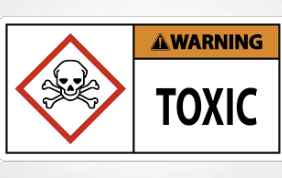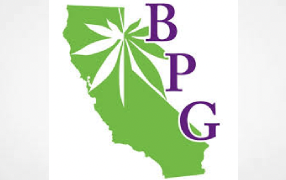Author Affiliations Article Information
JAMA Netw Open. 2023;6(9):e2336035. doi:10.1001/jamanetworkopen.2023.36035
INFO – PDF & FULL REPORT AT
https://jamanetwork.com/journals/jamanetworkopen/fullarticle/2809944
Findings In a longitudinal cohort study of 619 high-risk young adults in Ontario, Canada, there was an average decrease in cannabis use frequency and consequences across legalization, but patterns of use frequency and consequences over time differed significantly according to prelegalization use of cannabis.
Meaning These findings suggest that across Canadian cannabis legalization, high-risk young adults showed different patterns of change; those using cannabis frequently prelegalization exhibited reductions consistent with aging out, and those not using cannabis prelegalization exhibited modest increases in use over time.
Importance A key concern about recreational cannabis legalization is increases in use and adverse consequences, particularly among young adults (aged 18-29 years) who have the highest prevalence of cannabis use, and especially in higher-risk, more vulnerable young adults. However, few longitudinal studies have examined patterns of cannabis consumption in high-risk young adults over the course of legalization.
Objective To examine changes in cannabis use frequency and cannabis-related consequences over recreational cannabis legalization in Canada in a longitudinal sample of high-risk young adults.
Design, Setting, and Participants Longitudinal observational cohort study following young adults in Ontario, Canada, aged 19.5 to 23.0 years who reported regular heavy episodic drinking (65% past-month cannabis use) at enrollment. Participants were surveyed every 4 months for 3 years between February 2017 and February 2020 (3 prelegalization waves, 4 postlegalization waves). Data were analyzed from March to May 2023.
Exposures Recreational cannabis legalization in Canada and 4 potential moderators of change: sex, income, education, and prelegalization cannabis use frequency.
Main Outcomes and Measures Cannabis use frequency and cannabis-related adverse consequences.
Results In a cohort of 619 high-risk young adults (baseline mean [SD] age, 21.0 [1.2] years; 346 female participants [55.9%]), omnibus model testing revealed significant overall decreases in both cannabis use frequency (F = 2.276, 3000.96; P = .03) and cannabis-related consequences (F = 10.436, 3002.21; P < .001) over time, but these changes were substantially moderated by prelegalization frequency (frequency: F = 7.5224, 3021.88; P < .001; consequences: F = 7.2424, 2986.98; P < .001). Follow-up tests showed individuals who used cannabis more frequently prelegalization significantly decreased their use and cannabis-related consequences postlegalization. In contrast, individuals who did not use cannabis prelegalization exhibited a small magnitude increase in frequency over time but nonsignificant changes in cannabis-related consequences. Sex, income, and education did not moderate changes over time.
Conclusions and Relevance In this cohort study of high-risk young adults, individuals using cannabis frequently prelegalization showed significant reductions in use and consequences over time, reflecting an aging out pattern. Small increases in use among participants with no prelegalization use were observed over time, but without parallel changes in cannabis-related consequences. The results did not reveal substantive adverse near-term outcomes across the legalization period, although a within-participants design cannot rule out the possibility of alternative trajectories in the absence of legalization.
A substantial liberalization of cannabis regulatory policy has taken place over the past decade in North America, including Canadian federal legalization of recreational (nonmedical) cannabis use for adults in October 2018. Although some differences exist by province, recreational legalization at the federal level in Canada provides a strict system for controlling the production, distribution, sale, and possession of cannabis.1 Notable components of this system include a federal age limit of 18 years for purchase (provincial limits range from 18-21 years), an individual possession limit of 30 g of dried cannabis or equivalent amounts of nondried cannabis, and strict regulations surrounding permissible packaging and marketing for cannabis products, specifically restriction of products that may be appealing to youths.1 Although original legislation only pertained to dried flower products, edible cannabis and concentrate products were allowed 1 year later in October 2019.1
In all jurisdictions where cannabis legalization takes place, a key concern has been that cannabis use and related harms would increase among youths and young adults due to easier access, growing social acceptability, declining perception of harm, lower prices, a wider array of products and modes of use, and increasing product potency.2–6 Young adults are of particularly high priority because they have the highest prevalence of use. In Canada, for example, cannabis use is the second most prevalent substance used for those aged 20 to 24 years (33% consumed in the past year),7 after alcohol. Moreover, cannabis and alcohol use tend to occur concurrently in this group and co-use is associated with additional adverse consequences.8,9 Young adults also have the highest prevalence of cannabis use disorder.10 Finally, a primary concern is that cannabis use in young adults may interfere with psychosocial development, such as academic and vocational attainment, and neurodevelopment, which is estimated to continue until approximately 25 years of age.11,12 Accordingly, young adults, particularly those already using cannabis and/or alcohol, represent a high-risk group warranting surveillance in the context of legalization.
Evidence examining the impacts of legalization on young adults from US jurisdictions is generally mixed. One study focusing on postsecondary students in Oregon found an increase in cannabis use after recreational cannabis legalization,13 but a broader study found no significant changes in young adult cannabis use across legalization in Colorado, Washington, Alaska, or Oregon.14 In Canada, evidence is sparse regarding the impact of legalization on cannabis use and cannabis-related consequences. Prelegalization data from the 2018 National Cannabis Survey indicated that the prevalence of cannabis use in the past 3 months among those aged 18 to 24 years was 28%, the highest prevalence of all age groups.15 Although some studies have found that cannabis use (and frequency of use) increased among youths and young adults following legalization, most studies have not found a pronounced or statistically significant increase.3,16,17 Conversely, evidence suggestions that there have been some impacts on public health more broadly, including increases in incidence of youth hospitalizations and emergency department visits related to cannabis use and increased cannabis-related traffic fatalities.17–19
Although young adults consume cannabis at a higher prevalence than other age groups, there is a dearth of research focusing on this population. Moreover, there have been few longitudinal studies examining the impact of legalization, which represents a substantial research gap. Longitudinal data provide richer information than repeated cross-sectional surveys, allowing for characterization of within-person changes, the comparison of trajectories of cannabis use, estimation of rates of change, and moderators of changes, such as prelegalization cannabis use status, sex, or income.18,20 The purpose of this study was to address these research gaps by examining the association of cannabis legalization with cannabis use frequency and cannabis-related consequences using longitudinal data from a cohort of young adults who already used substances prelegalization. These individuals represent a high-risk subgroup of the population given their age and their existing propensity to engage in substance use. The first aim of this study was to examine the overall changes in cannabis use outcomes, namely frequency of use and negative consequences from cannabis, both descriptively and analytically. The second aim was to examine credible moderators of differences in changes over time, namely sex, income, education, and prelegalization frequency of cannabis use.
This study used a longitudinal cohort design, using data from an existing cohort of high-risk young adults in Ontario, Canada. Inclusion criteria were as follows: aged 19.5 to 23.0 years at first data collection; engaged in 2 or more heavy episodic drinking episodes; fluency in written English; and no current or past experiences in psychosis. Substance use criteria were intended to recruit a sample with epidemiologically common patterns of substance use associated with elevated risk for adverse consequences in young adults. This cohort study was reviewed and approved by the Hamilton integrated research ethics board. Informed consent was obtained from participants in-person during their baseline visit. This study followed the Strengthening the Reporting of Observational Studies in Epidemiology (STROBE) guidelines.
Participant enrollment started in April 2017 on a rolling basis, with follow-up assessments administered every 4 months. To assess changes in cannabis consumption frequency and related consequences before and after legalization, assessments were rebinned in 4-month periods to align with legalization in Canada (October 17, 2018). In total, 7 time points were included in the analysis: 2 prelegalization time points (April 17, 2017, to February 16, 2018, and February 17 to June 16, 2018), 3 postlegalization time points (February 17 to June 16, 2019; June 17 to October 16, 2019; and October 17, 2019, to February 16, 2020), and 2 transition periods between the prelegalization and postlegalization periods (June 17 to October 16, 2018, and October 17, 2018, to February 16, 2019). A visualization of participation over these time points is provided in eFigure 1 in Supplement 1. The first time point was longer than subsequent time points because of the rolling recruitment process. The first transition period coincides with the passing of the Cannabis Act in June 2018 and the second reflects the period immediately following legalization.
Participants were required to have at least 1 prelegalization and postlegalization observation assessment and have demonstrated adequate attention on the majority of quality control items to be included in the current study. Of the original cohort, 85% met this criterion. An attrition analysis examining the removed individuals is available in the eTable in Supplement 1; those excluded were more likely to be male and had moderately higher average cannabis use frequency and Brief Marijuana Consequences Questionnaire (B-MACQ) scores.
Participants were assessed for lifetime cannabis use and, among those who had used cannabis, cannabis frequency during the past month was assessed using the Alcohol, Smoking, Substance Involvement Screening Test, with response options of none, monthly, weekly, daily, or multiple times daily.21 Using response options from these 2 questions, the frequency categories examined in this study were never use (ie, those who have never used cannabis in their life), no (current) use, occasional use (monthly), regular use (weekly), and frequent use (daily or multiple times daily). Consequences related to cannabis use were measured for the past 4 months using the B-MACQ,22 which creates a sum score of number of problems endorsed (0 to 21). To visualize B-MACQ scores, groups of 0 consequences, 1 to 4 consequences, and 5 or more consequences were created, but in analyses this measure was treated as continuous. The Cannabis Use Disorder Identification Test (CUDIT), an 8-item clinical screening tool for cannabis misuse23 was administered at baseline to characterize clinical severity; a cutoff of 6 has been validated in young adults.24 To contextualize the sample with a clinical cutoff, frequency and B-MACQ in relation to the CUDIT are shown in eFigure 2 in Supplement 1. Collectively, the separate outcomes for frequency and consequences show high overlap with the CUDIT cutoff at baseline.
All statistical analyses and data visualizations were conducted in R version 4.2.2 (R Project for Statistical Computing). Descriptive analyses used alluvial plots and additional data visualization to depict changes across legalization. To efficiently summarize available data, descriptive visualizations show transitions between highest use category over the prelegalization and postlegalization time points. In statistical analyses, cannabis use frequency and consequences associated with cannabis use were modeled as outcomes across all 7 time points using linear mixed effects models (LMMs). The use of LMMs accounted for the cross-linked longitudinal nature of the data, capturing individual-level variation. Although outcome data were not continuous by nature, LMMs are robust to departures from distributional assumptions of normality,25 and numerous studies have highlighted that ordinal or scale-type data can be appropriately treated as continuous.26–28 Examination of residual plots and sensitivity analyses using a robust scoring equations estimator further validated the linear approximation of the outcome data. All models controlled for age, sex, income, and education. For aim 1, analyses examined the outcomes of time on overall cannabis use frequency and consequences. For aim 2, interaction effects were added to examine the potential moderating effects of (1) sex assigned at birth; (2) median household income; (3) minimum 4-year undergraduate degree; and (4) maximum prelegalization frequency of use (at time point 1 or 2). Income and education were assessed at follow-up rather than baseline due to the young age of this cohort at enrollment. Significant omnibus results of time and the interaction of time with moderators were followed up using post-hoc pairwise contrasts to examine differences between time points. Emphasis was on whether transition or postlegalization time points were significantly different from both prelegalization time points. Statistical tests were considered significant at α = .05. Data were analyzed from March to May 2023.
Table 1 presents descriptive statistics for this study sample of 619 participants. The mean (SD) age was 21.0 (1.2) years, 346 (56%) were female, and 330 (53%) had a bachelor’s degree at the most recently available postlegalization time point. The sample sizes at each wave for the final sample were 418 at time 1, 578 at time 2, 530 at time 3, 509 at time 4, 524 at time 5, 531 at time 6, and 529 at time 7. Prelegalization, occasional cannabis use was most common (206 participants [33%]). Among those who used cannabis, mean (SD) prelegalization experiences of cannabis-related consequences in the past month was 2.53 (3.91), with a moderate spread across participants.


















